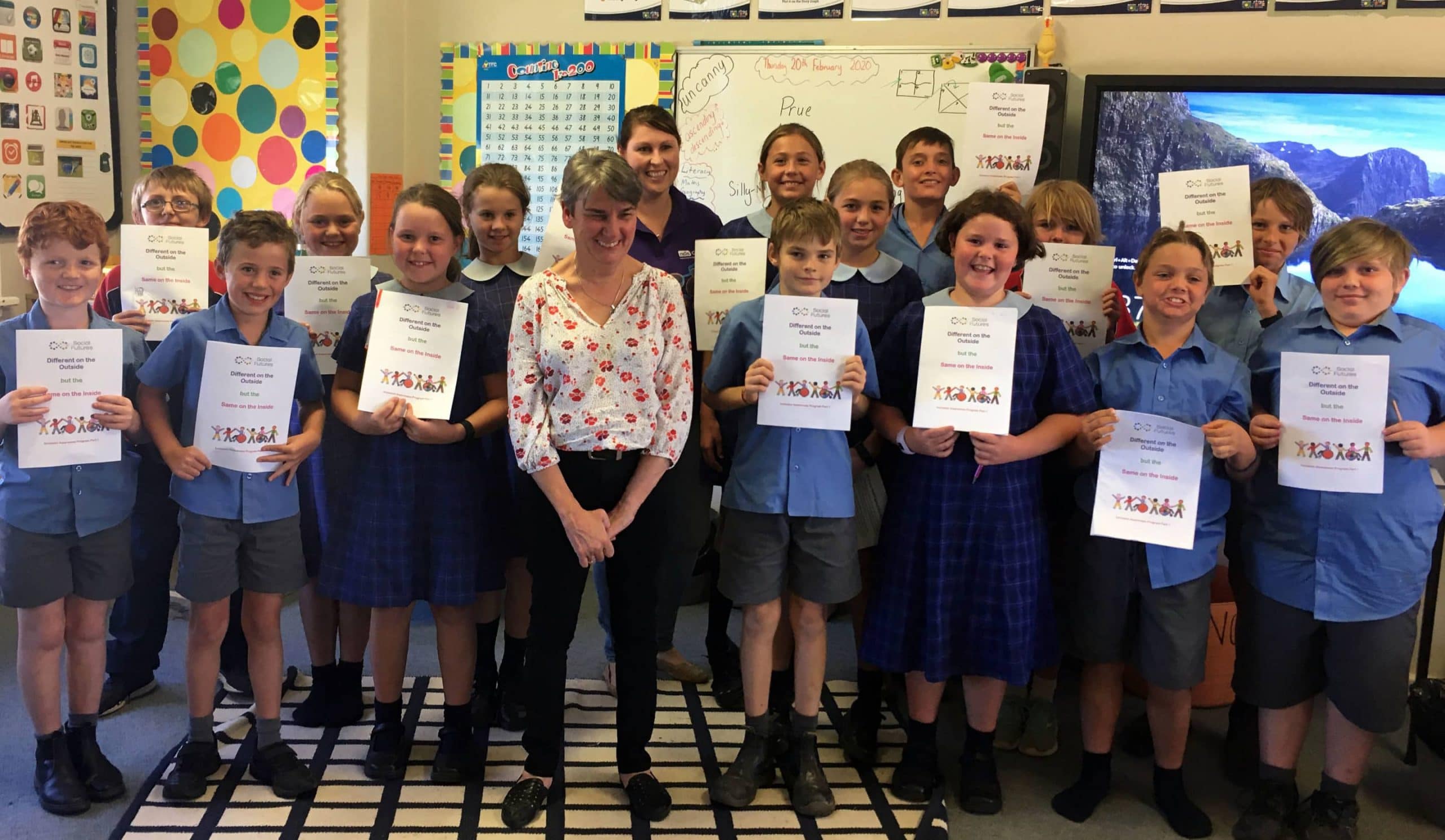
Schools are looking toward an inclusive future thanks to primary school inclusion program, ‘Different on the Outside but the Same on the Inside’.
Schools are looking toward an inclusive future thanks to primary school inclusion program, ‘Different on the Outside but the Same on the Inside’.
Many of us saw the distraught video of nine year old Quaden Bayles and our hearts wrenched seeing the effect of bullying upon a young person. The video, which has been viewed 2.5 million times and shared by more than 65,000 people, highlighted just how damaging bullying can be and the dire need for education in schools.
Happily, Quaden’s story appeared to land on a bright note with support flowing in from around the world. But Quaden’s case is one in many, and bullying for people with a disability is overwhelmingly common and debilitating.
Young people with a disability are more likely than their peers to have poor mental health[1] and recent research[2] suggests almost half of the poorer mental health we see in teenagers with a disability is due to bullying.
But a new program being delivered by Social Futures aims to tackle bullying head on.
The ‘Different on the Outside but the Same on the Inside’ program is the brain child of Social Futures Local Area Coordinator, Prue McCarthy. An educational inclusion awareness program about disability designed for children 8-11 years, this program has been received with enthusiasm by schools in Western NSW.
‘Different on the Outside but the Same on the Inside’ introduces young people to different types of disability. It uses activities and games to teach children empathy and help them to gain an understanding of what it is like to live with a disability.
“I wanted children to realise that people with a disability are just the same as everyone else”, says Prue, “and I hope they can carry this awareness with them through to their adult years and onto the next generation. The best place to make change into the future is with the children of today.”
One of the features making this program so successful is the opportunity for children to interact directly with a person with disability and to ask them open and honest questions.
“’What the hardest thing for you to do with having a disability?’ they often ask”, says Prue “or I’m commonly asked if I ever wished that I weren’t born with a disability.”
“This is why I like the program so much,” states Prue. “Because I am a presenter with a disability walking into the class room, I get to observe the students that might be laughing at me. But by the end of the program it is these children that are asking most of the questions to find out more about me and my disability.”
“I had one teacher tell me about a student who was hearing impaired but too embarrassed to wear his hearing-aides. But after I presented that student went up to his teacher and said “I think that I might start wearing my hearing-aides so I can learn more.” ”
“I know I have done my job well when I see students write on the evaluation forms, ‘people with disabilities can do anything they want to’ ” smiles Prue.
The primary school inclusion program is currently delivered across the Orange NSW local government area with Social Futures looking to expand to Orana far west.
If your school would like to be involved, contact Social Futures on 1800 522 679.
[1] https://miami.pure.elsevier.com/en/publications/mental-health-issues-in-children-and-adolescents-with-chronic-ill
[2] https://academic.oup.com/ije/article/47/5/1402/5066450?guestAccessKey=92b80704-1fbd-4548-b41b-1fdcc02acbaa